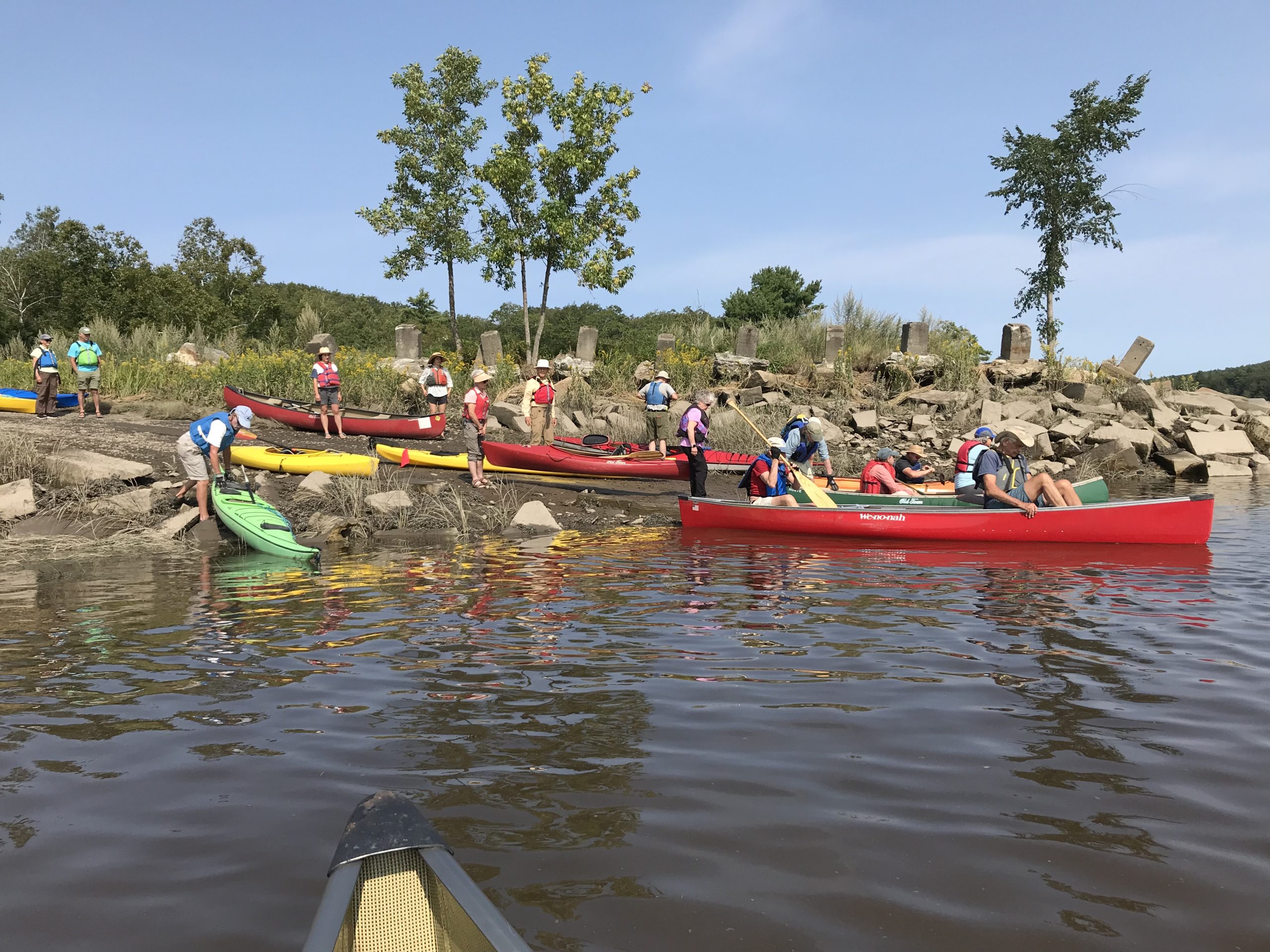Paddling the South Branch of the Marsh River, Frankfort and Prospect

September 2 could not have been a more beautiful day, and paddling conditions were ideal. Not too hot, a light breeze all day, a rising tide helping us paddle up the South Branch of the Marsh River.
Twenty-three people met and launched at 10:30 am on a rising tide, which helped us paddle upstream to the headwaters 4 miles away.
Along the way we saw two great egrets, an unusual sight in this part of Maine before this summer. Four bald eagles soared above us most of the day, with flocks of spotted sandpipers and several kingfishers leap-frogging with us as we twisted our way through Spartina marsh grass and goldenrod. The marsh wrens and saltmarsh sparrows had left for southern destinations, but an abundance of black ducks, year-round residents, attest to the Penobscot name of the stream: kwikwmessewihtek, “Black Duck Stream.”
Black Duck Stream is a 4-mile tidal river connected to the Penobscot River in Marsh Bay. Together they surround Bowden Point, Prospect. Both shores of the South Branch (Black Duck) are a designated State of Maine Wildlife Management Area, Mendall Marsh.
At the head of the tide where Hawes Brook ripples into the river over a step falls, we ate lunch under a train trestle in the cool shade of overhanging oaks. Two geologists from UMaine, Drs. Alice and Joe Kelley, explained the local geology through the ages until now. We were paddling in an ancestral pathway of the Penobscot River, before uplift and glacial deposits changed the course of the river.
To end the trip, we paddled back on a falling tide to the boat launch, where we started. Several people said they had always wanted to paddle the river but for various reasons had not yet done so; they were happy to finally make its acquaintance.
